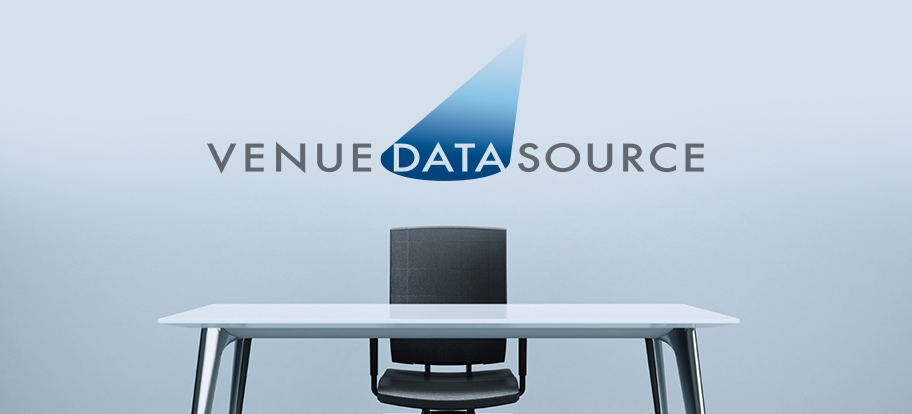Voting for IAVM’s 2015-2016 Board of Directors is Now Open
Voting is now open and will remain so through July 20, 2015. The complete slate, including biographical information and photos, can now be viewed through the ballot site.
All voting members should have received an email titled “2015-2016 Board of Directors Election-login information below.” The email contains a generated user name and password to use when logging in to submit votes. If you haven’t received the email, please contact Rosanne Duke via email or by calling 972.538.1025.
Once again, the ballot is available through Survey & Ballot Systems, allowing complete confidentiality and security to our members.
The results of the voting will be posted following the closing of the ballot on July 20. However, join us in Baltimore for VenueConnect, Aug. 1-4 and have the opportunity to meet the new board members in person. Every minute of this year’s program is distinct, offering new dynamic sessions, topic round-tables, and the largest industry trade show and networking events only possible in a city like Baltimore!
30|UNDER|30 Spotlight: Matthew Boring
Our next recipient spotlight of the IAVM Foundation’s inaugural class of 30|UNDER|30 is Matthew Boring, marketing and sales manager at the Lied Center for the Performing Arts in Lincoln, Nebraska.
“You have to have a great experience for your patrons,” Boring said when asked what he deems necessary for success in the industry. “When they come to the venue, it’s not just the performance—it’s their ticket buying experience, it’s the concessions you provide, it’s your lounge areas, what type of premium services you’re able to offer. You have to constantly be evolving and using patron feedback, otherwise you end up with a stagnant venue”
Please watch the video above to learn more about Boring, and thank you to SearchWide and Ungerboeck Software International for their generous support of the IAVM Foundation’s 30|UNDER|30 program.
Chocolate and Cats are Good for Your Health
I’m about to tell you two great things about chocolate and cats. You’re probably thinking, “Those two things are already great; how much greater can they be?”
Well, according to research published in the journal Heart, eating up to 100 grams (3.5 ounces) of chocolate every day is linked to lowered heart disease and stroke risk.
Researchers tracked the health of more than 20,000 people over 12 years before concluding their findings, which showed that higher levels of chocolate consumption were associated with younger age and lower weight (BMI), waist: hip ratio, systolic blood pressure, inflammatory proteins, diabetes, and more regular physical activity. The calculations showed that compared with those who ate no chocolate, higher intake was linked to an 11 percent lower risk of cardiovascular disease and a 25 percent lower risk of associated death.
Also, the researchers said that there doesn’t appear to be any evidence showing that chocolate should be avoided in those who are concerned about cardiovascular risk.
Now, let’s talk about cats.
Jessica Gall Myrick, an assistant professor at Indiana University, surveyed approximately 7,000 people about their cat video viewing behaviors and how that affects their moods.
“Some people may think watching online cat videos isn’t a serious enough topic for academic research, but the fact is that it’s one of the most popular uses of the Internet today,” Myrick said. “If we want to better understand the effects the Internet may have on us as individuals and on society, then researchers can’t ignore Internet cats anymore.”
Myrick found that participants in the study
—were more energetic and felt more positive after watching cat-related online media than before.
—had fewer negative emotions, such as anxiety, annoyance, and sadness after watching cat-related online media than before.
—often view Internet cats at work or during studying.
“Even if they are watching cat videos on YouTube to procrastinate or while they should be working, the emotional pay-off may actually help people take on tough tasks afterward,” Myrick said.
So, grab a chocolate bar and watch more cat videos online. Your health will thank you.
(Image: Justina Kochansky/Creative Commons)
Oregon Convention Center to Install Solar Panels
The Oregon Convention Center plans to place 160,000 square feet of solar panels on its roof by mid July. SolarCity will build and own the two-megawatt system and sell the power wholesale to the center in a 20-year deal.
Matt Uchtman, the center’s director of operations, told the Portland Tribune that the system will fulfill approximately 25 percent of the venue’s annual energy needs.
The convention center currently uses 7.6 megawatts to 8 megawatts of energy annually.
“Our utility usage is dropping, but we’re not done,” Uchtman told the paper.
The venue is one of only two U.S. convention centers to be certified LEED platinum.
“We are committed to ongoing LEED certification and continually looking at ways to drive positive change at the convention center, and always hope to be sustainable,” Scott Cruickshank, the center’s executive director, told the Tribune.
The 2015 Capital Funding Report Now Available
Does your venue operate at a loss? If so, how does your deficit compare with venues in your competitive set? Does your venue finance and budget for major construction or expansion costs the same way as other venues like yours?
The VenueDataSource 2015 Capital Funding Survey obtained the answers to those questions and many others from more than 150 of IAVM’s member venues. Here are a few of the survey results:
• In their most recently completed fiscal year, 64 percent of the venues reported they operate at a deficit – We know the average deficit, and we share that with you.
• Nine out of 10 facilities that operate at a deficit receive additional funding from non-operating revenue sources – And we tell you those sources.
• In the past 15 years, 62 percent have undergone major construction or renovation – We tell you how those projects were financed.
To learn more, contact Frank Ingoglia at frank.ingoglia@iavm.org to arrange purchasing the 2015 Capital Funding Report. You can also purchase informative reports on Management Salaries, Operating Expenses and Revenues, Sustainability and Safety and Security at the VenueDataSource website.
Do you want to receive a Front Row News weekly digest?
Categories
- Allied (861)
- Architecture (147)
- Arenas (747)
- Career (897)
- Convention Centers (895)
- Education (623)
- Events (1,544)
- Food & Beverage (193)
- Foundation (113)
- Guest Experience (1,496)
- Industry News (2,270)
- Leadership (1,888)
- Marketing (150)
- Membership (2,000)
- Music (213)
- Performing Arts Centers (454)
- Professional Development (409)
- Research (127)
- Safety & Security (442)
- Sports (763)
- Stadiums (608)
- Student (159)
- Technology (516)
- Ticketing (92)
- Touring (82)
- Trends (364)
- Uncategorized (743)
- Universities (218)
- Video (25)
- Young Professional (198)
Twitter Feed
- Twitter feed loading
Recent Posts
- Venuworks and ATG Entertainment Selected to Manage Fresno Convention and Entertainment Center
- Seattle Convention Center Announces Strategic Leadership Appointment and Growth Initiatives for 2026
- Peggy Daidakis Humbly Made Convention Center History
- Welcome to Our Newest Members
- New Member Benefit! IAVM Partners with Advantage Training to Elevate Staff Readiness and Guest Experience
Categories
- Allied
- Architecture
- Arenas
- Career
- Convention Centers
- Education
- Events
- Food & Beverage
- Foundation
- Guest Experience
- Industry News
- Leadership
- Marketing
- Membership
- Music
- Performing Arts Centers
- Professional Development
- Research
- Safety & Security
- Sports
- Stadiums
- Student
- Technology
- Ticketing
- Touring
- Trends
- Uncategorized
- Universities
- Video
- Young Professional
Archives
- December 2025
- November 2025
- October 2025
- September 2025
- August 2025
- July 2025
- June 2025
- May 2025
- April 2025
- March 2025
- February 2025
- January 2025
- December 2024
- November 2024
- October 2024
- September 2024
- August 2024
- July 2024
- June 2024
- May 2024
- April 2024
- March 2024
- February 2024
- January 2024
- December 2023
- November 2023
- October 2023
- September 2023
- August 2023
- July 2023
- June 2023
- May 2023
- April 2023
- March 2023
- February 2023
- January 2023
- December 2022
- November 2022
- October 2022
- September 2022
- August 2022
- July 2022
- June 2022
- May 2022
- April 2022
- March 2022
- February 2022
- January 2022
- December 2021
- November 2021
- October 2021
- September 2021
- August 2021
- July 2021
- June 2021
- May 2021
- April 2021
- March 2021
- February 2021
- January 2021
- December 2020
- November 2020
- October 2020
- September 2020
- August 2020
- July 2020
- June 2020
- May 2020
- April 2020
- March 2020
- February 2020
- January 2020
- December 2019
- November 2019
- October 2019
- September 2019
- August 2019
- July 2019
- June 2019
- May 2019
- April 2019
- March 2019
- February 2019
- January 2019
- December 2018
- November 2018
- October 2018
- September 2018
- August 2018
- July 2018
- June 2018
- May 2018
- April 2018
- March 2018
- February 2018
- January 2018
- December 2017
- November 2017
- October 2017
- September 2017
- August 2017
- July 2017
- June 2017
- May 2017
- April 2017
- March 2017
- February 2017
- January 2017
- December 2016
- November 2016
- October 2016
- September 2016
- August 2016
- July 2016
- June 2016
- May 2016
- April 2016
- March 2016
- February 2016
- January 2016
- December 2015
- November 2015
- October 2015
- September 2015
- August 2015
- July 2015
- June 2015
- May 2015
- April 2015
- March 2015
- February 2015
- January 2015
- December 2014
- November 2014
- October 2014
- September 2014
- August 2014
- July 2014
- June 2014
- May 2014
- April 2014
- March 2014
- February 2014
- January 2014
- December 2013
- November 2013
- October 2013
- September 2013
- August 2013
- July 2013
- June 2013
- May 2013
- April 2013
- March 2013
- February 2013
- January 2013
- May 2012
- March 2012
- December 2011
- November 2011
- October 2011
Recent Comments
- Frank Bradshaw, Ph.D., CVE on John Meyer, CVE, a Tireless Advocate of Certification for Venue Professionals, Has Died
- Neil Sulkes on Hilary Hartung, Friend to Many in Venue Marketing, Has Left Us
- Jason Parker, CVE on The Devastation of Hurricane Helene and How We Can Support One Another
- Larry Perkins on Touhey Testifies Against Speculative Ticketing Before Congressional Subcommittee
- Peter Secord on Major Players for Planned Elkhart Amphitheater Were in the Mix at VenueConnect





